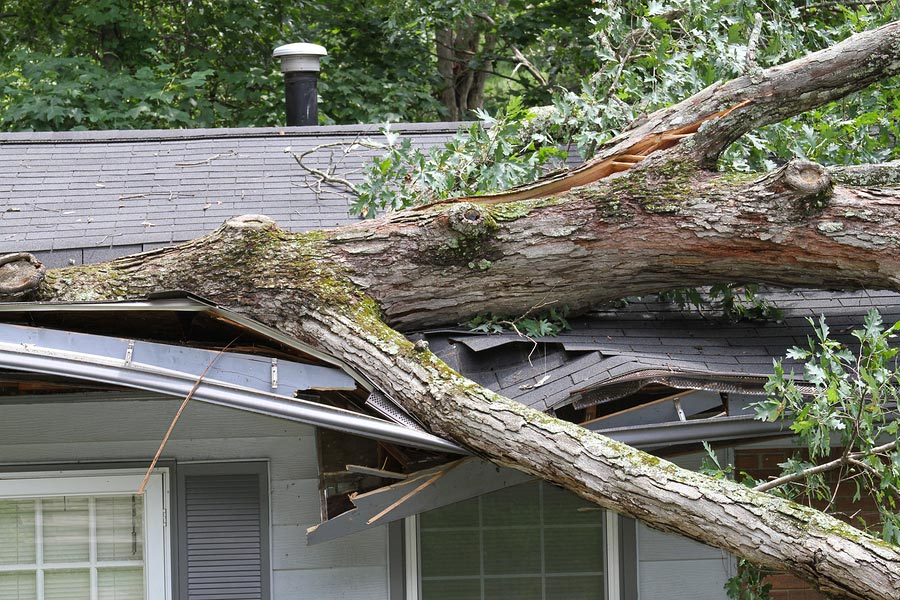When it comes to storm leads, many contractors focus on...
What is Wind Damage?
Wind damage is a significant concern for homeowners, particularly in areas prone to strong winds, storms, or hurricanes. Understanding the nature of wind damage is crucial for storm lead call center professionals to accurately assess and address homeowners' needs. This educational topic provides insights into the causes, effects, and mitigation strategies related to wind damage, enabling you to better assist homeowners in their recovery process.
- Defining Wind Damage: Define wind damage as the harm or destruction caused by the forceful movement of air, typically due to strong winds or severe weather conditions. Wind damage can affect various aspects of a property, including roofs, windows, siding, fences, and landscaping.
- Causes of Wind Damage: Examine the primary causes of wind damage. High winds associated with storms, hurricanes, tornadoes, or gust fronts can generate significant force that impacts structures and properties. Understanding the causes helps in assessing the extent of damage and developing appropriate response strategies.
- Types of Wind Damage: Explore the different types of wind damage homeowners may encounter. This includes roof damage (e.g., lifted or missing shingles, structural integrity issues), window and door damage (e.g., shattered glass, broken frames), siding damage (e.g., cracks, detachment), and damage to outdoor structures (e.g., fallen trees, damaged fences). Familiarize yourself with these types to better understand homeowners' concerns and provide appropriate solutions.
- Impact on Homeowners: Discuss the significant impact wind damage has on homeowners. It compromises the structural integrity of their homes, disrupts their daily lives, and poses safety risks. Wind damage can result in property loss, displacement, and financial burdens. Recognizing the emotional and practical challenges homeowners face enables you to approach them with empathy and tailored solutions.
- Assessing Wind Damage: Learn how to assess wind damage effectively. Develop skills in conducting thorough inspections to identify visible signs of damage, such as roof leaks, loose or damaged materials, or compromised windows and doors. Understanding the assessment process helps in accurately documenting the extent of damage and developing appropriate action plans.
- Mitigation and Repair Strategies: Explore mitigation and repair strategies to address wind damage. Provide homeowners with information on reinforcing roofs, strengthening windows and doors, securing outdoor structures, and implementing landscape designs that mitigate wind impact. Educate them about the importance of proper maintenance and periodic inspections to identify and address potential vulnerabilities.
- Insurance Coverage and Claims: Discuss the role of insurance coverage in wind damage situations. Educate homeowners about their insurance policies, coverage limitations, and the claims process. Guide them in documenting the damage, filing claims, and working with insurance adjusters to ensure a smooth and efficient process.
- Safety Considerations: Highlight the importance of safety in dealing with wind damage. Educate homeowners about potential hazards, such as unstable structures, sharp debris, or electrical dangers. Emphasize the need to prioritize personal safety and engage professional assistance for hazardous tasks.
- Emergency Preparedness: Educate homeowners about the significance of emergency preparedness for wind-related events. Provide guidance on developing an emergency plan, securing essential supplies, and understanding evacuation procedures. Encourage them to stay informed about weather alerts and take proactive measures to protect their properties and loved ones.
- Partnering with Wind Damage Specialists: Recognize the value of partnering with wind damage specialists and contractors. Establish relationships with reputable professionals who can provide expertise in assessing, repairing, and mitigating wind damage. Collaborating with experienced specialists ensures homeowners receive efficient, reliable, and comprehensive restoration solutions.
Understanding wind damage is essential for storm lead call center professionals. By familiarizing yourself with the causes, effects, and mitigation strategies associated with wind damage, you can effectively assist homeowners in their recovery process. By assessing the extent of wind damage, providing guidance on mitigation and repair strategies, and assisting homeowners with insurance claims, you can be a valuable resource in their journey towards restoring their homes and regaining a sense of security.
Stay informed about local weather patterns, windstorm events, and industry best practices for wind damage mitigation. This knowledge will enable you to offer timely and accurate information to homeowners, empowering them to make informed decisions about protecting their properties.
When communicating with homeowners, emphasize the importance of proactive measures such as regular maintenance, reinforcing vulnerable areas, and investing in wind-resistant materials. Educate them about the long-term benefits of these strategies, including increased property value, reduced insurance premiums, and enhanced safety for their families.
Additionally, consider hosting educational workshops or webinars to further educate homeowners on wind damage prevention, preparedness, and recovery. Share practical tips, case studies, and success stories to engage and inspire homeowners to take action in safeguarding their homes against wind damage.
Remember, effective communication and empathy are key in assisting homeowners who have experienced wind damage. Actively listen to their concerns, address their questions and anxieties, and offer support throughout the recovery process. By providing reliable information, practical solutions, and compassionate assistance, you can make a positive impact on their lives during a challenging time.
By delving into the topic of wind damage and equipping yourself with knowledge and resources, you can become a trusted advisor for homeowners seeking guidance in navigating the complexities of wind damage. Your expertise will not only help homeowners recover and rebuild, but also contribute to the overall resilience and preparedness of communities affected by wind-related events.











